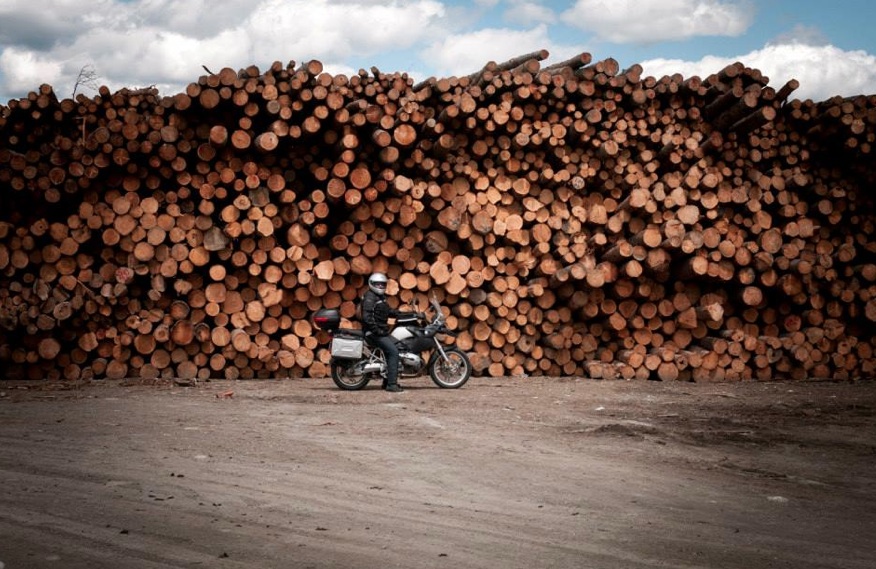 I just returned from a week-long motorcycle trip with my friend Paul. It was an awesome ride, my only complaint that it wasn’t a few days longer. In all, we covered over 1,800 miles through all of the New England states via a detour through Montreal and southern Quebec.
I just returned from a week-long motorcycle trip with my friend Paul. It was an awesome ride, my only complaint that it wasn’t a few days longer. In all, we covered over 1,800 miles through all of the New England states via a detour through Montreal and southern Quebec.
This is going to be a long post, so I’ll put the important stuff up front: The pictures are here.
If you are interested in a quick recap and lessons learned, keep reading.
The weather was awesome, especially given what we’ve been experiencing lately. A week earlier and we would have been rained on daily, a week later and we would have been sweating it out. As it was, we only got rained on for three or so hours one afternoon, and even that wasn’t so bad. Of course, both of us had rain gear failures in one form or another. In Paul’s case, his new, waterproof boots turned out not to be so waterproof. In both of our cases, our rain pants didn’t keep us dry. Mine were due for a replacement anyway, so I bought a new rain suit in Montreal. It’s bright yellow so I look like a total jackass, or a Minion depending on who you ask. At least it’s bright and visible, always helpful in the rain.
Our route took us north through New York, Connecticut, Massachusetts, Vermont and New Hampshire. We took mostly back roads and a couple days to get to Montreal. From there, we went east through Canada into Maine and to the coast at Bar Harbor. Then, south along the New England coast through New Hampshire, Massachusetts (including the Cape), Rhode Island and Connecticut. To keep things interesting, we took the Port Jefferson Ferry back to New York rather than the typical I-95 or Merritt Parkway route.
A few lessons learned on this trip, in no particular order:
- Being able to talk to each other while riding is great. If we didn’t have bike-to-bike communication, we’d be pulling over a lot to talk to each other. With an intercom, it’s easy to say “I’m pulling over to take a picture, I’ll catch up to you.” or “My bike just broke.” or just chat. We both use the Cardo Scala Rider headsets. They are great and have the added benefit of letting you listen to music, GPS etc.
- Put some good riding roads in your GPS as routes, and build your actual routes from them. With a little research, you can find some really nice motorcycle routes for the areas you are traveling in. For example, Jon Kadis’ Back Roads Page lists a bunch of detailed routes around New York City and elsewhere. No GPS will give you this sort of local knowledge. What the GPS usually does quite well, is get you from point A to point B fairly quickly. So, put some good routes in for your trip, and use the GPS to get from route to route.
- Pack light. I didn’t learn this on this trip so much as the trip affirmed what I already knew. Motorcycles don’t have a ton of storage space on them, and you need to carry some touring essentials (rain gear, tools etc.)–even more if you’re camping. So, keep the other stuff to a minimum, especially clothing. You’ll be able to find a place to do laundry on the road, so just pack clothes for a few days, not the whole trip.
- Find a good riding partner. This isn’t an issue if you go solo, but it is important if you’re going with a friend. Try to find someone who has a similar riding style and shares your opinion on, among other things, how many miles to put in a day and how fast to ride on the highway. If you want to do a lot of antiquing and your buddy is set on doing Iron Butt sorts of mileage daily, you’re both going to be miserable. Luckily, I’ve got Paul who is good with directions, knows how to fix stuff and puts up with my ample bullshit.
- APRS does a reasonable job of tracking. It’s not perfect, especially with a handheld radio and rubber duck antenna, but in reasonably populated areas, it allows people to see where you are, if you want that sort of thing. As you can see from the map below, it tracked us fairly well (the first couple days of our trip don’t appear on this map). Next time, however, I’m not sure I’d bother taking the radio unless I planned on using it for more than just APRS tracking. I don’t need to be tracked that badly and it is difficult to use APRS for anything else while on a motorcycle.

Photo By Paul Davila, Map from aprs.fi